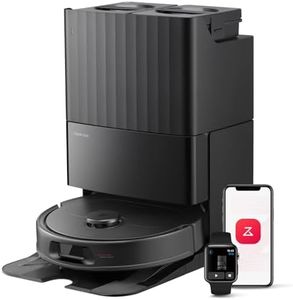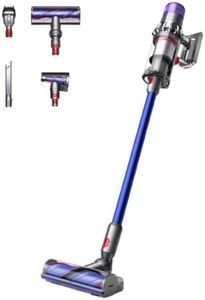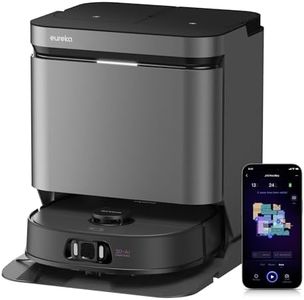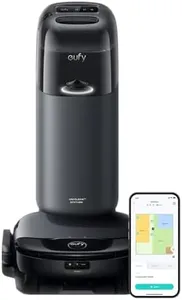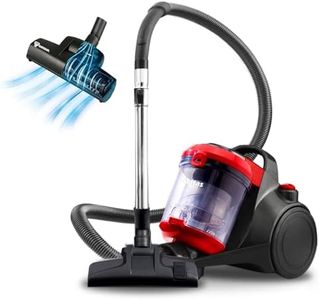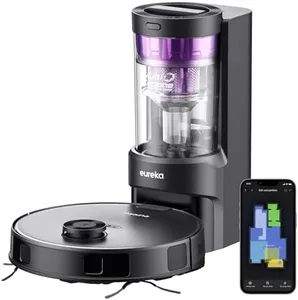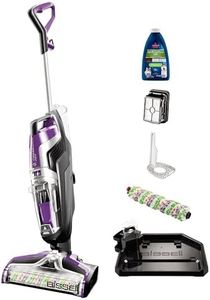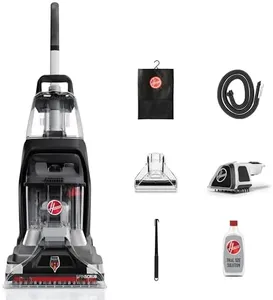We Use CookiesWe use cookies to enhance the security, performance,
functionality and for analytical and promotional activities. By continuing to browse this site you
are agreeing to our privacy policy
10 Best Pet Vacuum Cleaners
From leading brands and best sellers available on the web.Buying Guide for the Best Pet Vacuum Cleaners
Choosing a pet vacuum cleaner can make a significant difference in keeping your home free from pet hair, dander, and the dirt pets often bring indoors. The right vacuum should match your home's flooring, your pet's shedding habits, and your comfort with maintenance and use. Before buying, think about the surfaces you need to clean, the volume of pet hair you deal with, and how much time you want to spend vacuuming and emptying the cleaner.Suction PowerSuction power is a measure of how strongly the vacuum can pull up dirt, hair, and debris. This is crucial for pet owners because pet hair can be stubborn and get tangled in carpets and upholstery. Suction is often measured in watts, air watts, or simply described qualitatively as strong, medium, or weak. High suction power is great for thick carpets and multiple pets who shed a lot, while medium suction may suffice for hard floors or one pet. Those with mainly hard floors or lower shedding can opt for less powerful options, but high-shedding households and thick carpets benefit from stronger suction.
Filtration SystemThe filtration system refers to how well the vacuum traps dust, pet dander, and allergens, rather than releasing them back into the air. This spec is especially important for people with allergies or asthma. Vacuums with HEPA (High-Efficiency Particulate Air) filters are the gold standard here, capturing the smallest particles. Basic filters are fine if allergies aren’t a concern, but for those sensitive to pet dander or dust, a HEPA or similar advanced filtration system is a must.
Brush DesignBrush design impacts the vacuum’s effectiveness at picking up pet hair, especially from carpets and upholstery. Some vacuums have motorized or tangle-free brush rolls, which are ideal for pets because they reduce hair wrapping and make cleaning easier. For mostly hard flooring or light shedding, a simple brush design is usually sufficient. If your pet sheds a lot or you have thick carpeting or upholstery, look for advanced brush systems designed to remove hair deeply and prevent tangling.
Capacity (Dustbin or Bag Size)Capacity tells you how much the vacuum can hold before you need to empty it. Pet hair can fill up vacuum bins quickly, so a larger capacity means less frequent emptying—a big help for multi-pet homes or heavy shedders. Small bins are fine for occasional cleaning or small spaces, but large bins or bags are better for frequent, full-house cleaning and multiple pets.
Weight and ManeuverabilityThe weight and maneuverability of a vacuum influence how easy it is to use, especially across different areas and surfaces. Lightweight models are easier to carry up stairs or move around furniture, while heavier ones may offer more power or larger capacity. Pet owners often move between rooms and may clean furniture, car interiors, or stairs—choosing a model that’s easy to carry and handle can make cleaning less of a chore.
Accessories and AttachmentsMany vacuums come with special tools like pet hair turbo brushes, crevice tools, or upholstery attachments. These add-ons help reach pet hair in tricky spots like couch cushions, pet beds, or car seats. If you notice hair gathering in tight spaces or on furniture, look for models with extra pet-friendly attachments. If you mainly clean floors, you may not need many accessories.
Noise LevelNoise level refers to how loud the vacuum runs. Some pets and people are sensitive to noise, so a quieter machine can make cleaning less stressful. Vacuums are generally categorized as quiet, moderate, or loud. If your pet gets anxious or you prefer a quieter home, look for models specifically labeled as low-noise. If sound is not an issue, this spec may be less important to your decision.
